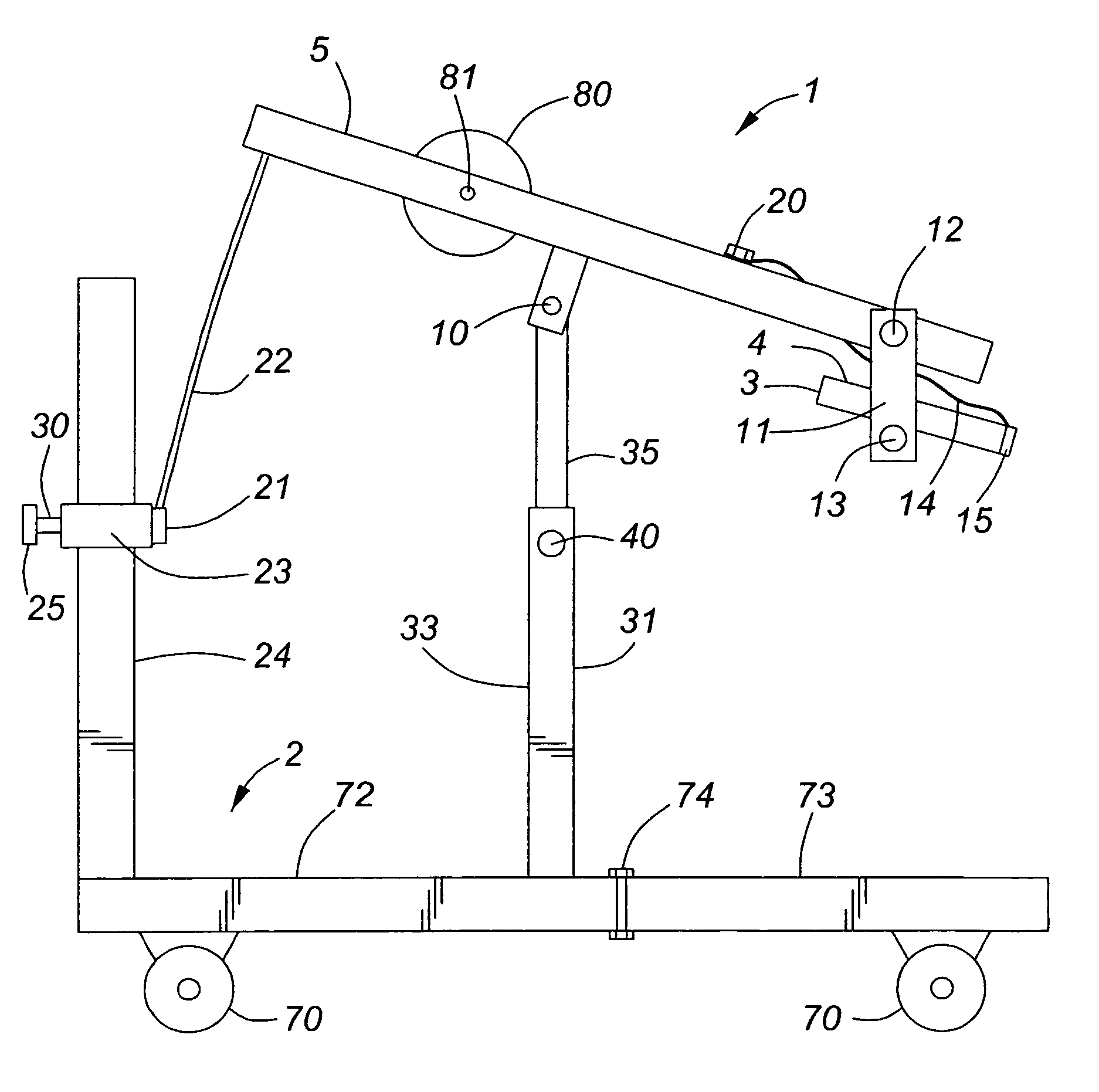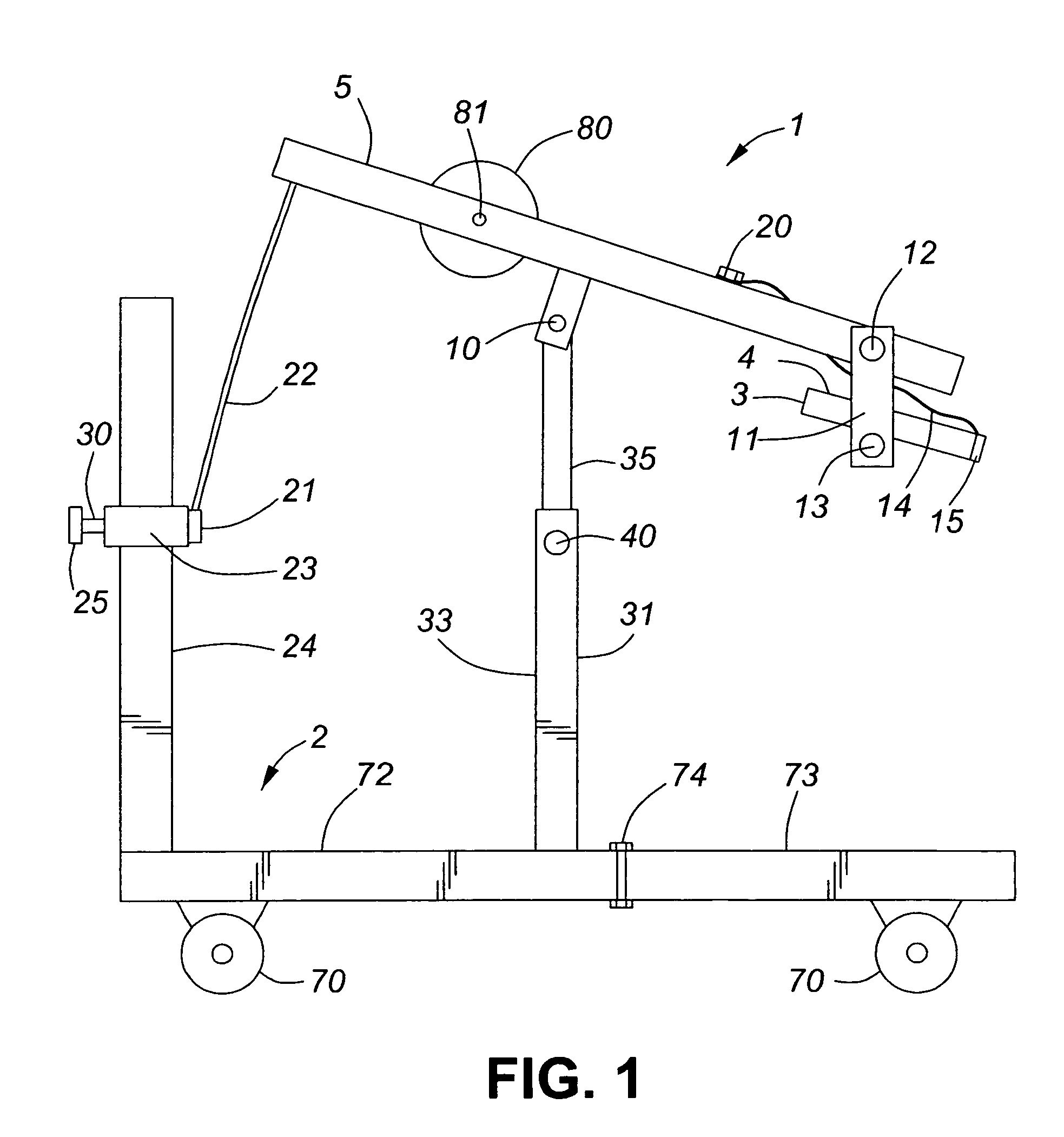Mobility assist
a technology of mobility aids and wheels, applied in walking aids, stilts, physical therapy, etc., can solve the problems of inability to practice tasks needed to improve the dynamic stability of the lower extremity, inability to achieve the desired freedom of movement, and inability to practice tasks
- Summary
- Abstract
- Description
- Claims
- Application Information
AI Technical Summary
Benefits of technology
Problems solved by technology
Method used
Image
Examples
Embodiment Construction
[0028]Throughout this specification, reference to “walking” or “endeavoring to walk” shall be construed as a reference to any activity requiring an individual to be in a substantially upright position. Such activities include, but are not restricted to, walking, jumping, side stepping, kicking a ball etc.
[0029]FIGS. 1 and 2 depict a mobility assist 1 having a mobile structure 2 provided with a seat 3 having a seat-support surface 4. The seat 3 is resiliently supported within the mobile structure 2 by a rocking frame 5 pivotally mounted to the mobile structure 2 through pins 10. The rocking frame 5 carries the seat 3 through linkages 11 pivotally coupled at one end to the rocking frame 5 through pins 12 and at the other end to seat 3 through a seat axle 13 about which seat 3 may pivot. The seat 3 may include a belt 14 releasably attached to the seat through an attachment 15 and to the rocking frame 5 through attachments 20. The seat 3 is oriented so that, when using the device, the p...
PUM
 Login to View More
Login to View More Abstract
Description
Claims
Application Information
 Login to View More
Login to View More - Generate Ideas
- Intellectual Property
- Life Sciences
- Materials
- Tech Scout
- Unparalleled Data Quality
- Higher Quality Content
- 60% Fewer Hallucinations
Browse by: Latest US Patents, China's latest patents, Technical Efficacy Thesaurus, Application Domain, Technology Topic, Popular Technical Reports.
© 2025 PatSnap. All rights reserved.Legal|Privacy policy|Modern Slavery Act Transparency Statement|Sitemap|About US| Contact US: help@patsnap.com



